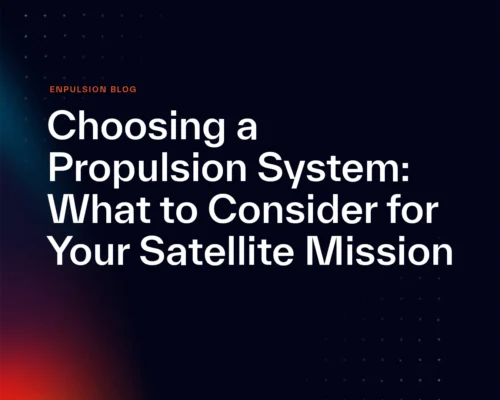Propulsion & Space Debris Mitigation: Responding to the EU Space Act
Europe Moves to Regulate Space Traffic: The EU Space Act
Over the past two decades, space activities grew significantly in scale. Private companies, satellite constellations, and new national space actors have rapidly increased the number of active spacecraft in orbit. While this unprecedented growth has unlocked valuable opportunities in space applications for industry and governments, it has also intensified concerns over orbital congestion and the long-term sustainability of space activities.
In response, the European Union has taken a landmark step toward shaping the future of space governance. In June 2025, the European Commission unveiled the EU Space Act, a sweeping regulatory proposal designed to create a unified legal framework for space activities across EU member states.
A New Chapter in European Space Policy
Building on three main pillars which are safety, resilience and sustainability, the EU Space Act aims at tackling critical issues such as: 1) collision risks; 2) the protection of critical space infrastructure; 3) the preservation of the space environment’s carrying capacity.
Among the most notable provisions is the requirement for spacecraft operating above 400 km to be equipped with onboard propulsion systems. This ambition is in alignment with the objectives of international norms of behaviour advocating active debris mitigation.
Propulsion as a Mission-Critical Feature
Fulfilling minimum manoeuvrability requirements is not only a nice to have — it’s a recognition of how essential manoeuvrability has become in today’s increasingly crowded orbits.
· Station-Keeping: propulsion remains the technical backbone of space infrastructure allowing satellites to perform in optimal mission parameters and ensuring extended operational time.
· Collision Avoidance Maneuvers: According to ESA data, close encounters between space objects in orbit have spiked dramatically. Satellites need agility to perform timely maneuvers to prevent catastrophic collisions with space debris or other spacecraft. Mature propulsion systems, including Field Emission Electric Propulsion (FEEP) technology, offer the precision and responsiveness needed for such evasive actions.
· End-of-Life Disposal Strategies: Under current guidelines, satellite operators are encouraged to de-orbit their spacecraft at the end of their missions but the EU Space Act would make end-of-life manoeuvres a legal obligation. Whether
Moving to a graveyard orbit or reentering Earth’s atmosphere safely, propulsion is one of the most effective solutions to implement these strategies.
As noted by Politico Europe, the EU Space Act is also a diplomatic endeavour aimed at strengthening the Union’s autonomy in space traffic management and its position in international space diplomacy in the context of growing geopolitical tensions and increased global competition.
Manoeuvrability Requirements for Future Compliance
With the EU Space Act bound to become law in the coming years, manufacturers and space mission planners are expected to further incorporate sustainability requirements in their considerations which is a positive development to promote sustainable practices in space. Commenting on the role of propulsion for compliance, ENPULSION CEO Alexander Reissner said: “ensuring that your spacecraft can maneuver out of a risky situation in orbit is a matter of environmental responsibility. In this regard, questions about the reliability of space systems have dramatically changed over the past ten years and for the better.”
Ready to Adapt to the New Rules of Space? Explore our technical datasheets, case studies, or contact an Enpulsion mission expert to see how FEEP can support your next sustainable mission.
To learn more about this tech and see how it fits into your mission, explore our data sheets and insights, or contact us to connect with a mission expert.
Get the latest information on Enpulsion innovation.
Subscribe to stay up to date on Enpulsion news, technology updates, and industry events.





